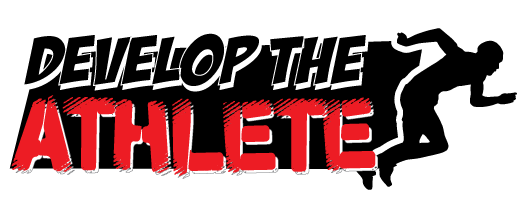
Want to Develop More Speed, Power and Explosiveness?
Learn How to Manipulate Your Workouts, So You Can Get Quicker and More Powerful on the Mat and in the Cage.
--------------------------------------------------------------------------------
START HERE: Download these FREE Resources
Download #1 -->> “How to Peak for Competition“ – This FREE pdf can help coaches and athletes assess their current ability level and then prioritize their training to fit their individual needs.
Download #2 -->> “Are You Powerful?” – This infographic talks about developing powerful athletes: Assessing power, challenges, tips and more. This is a great resource for any athlete or coach.
--------------------------------------------------------------------------------
"Technique is the ability to place my foot against the side of your head. Speed is the factor that prevents you from doing anything about it. Power is the reason your are laying on the ground."
 Speed, Power and Agility is the stuff that highlight reels are made of...
Speed, Power and Agility is the stuff that highlight reels are made of...
Its the "WOW" factor that makes people jump out of their seat during a fight.
Its the knockout punch, the devastating kick or the throw that ends up all over Instagram.
Developing the type of skill, timing and athleticism takes years of practice.
Developing power and speed is essential for athletics, but please realize that it is only one piece of a larger puzzle. Athletes should have healthy joints and a good foundation of strength, coordination and body awareness before working on speed and power.
Just like skill development (learning combos, takedowns, submissions, etc), proper technique and practice comes before speed and intensity.
The way we develop speed and power is the topic of this article and we will discuss what power is, how to assess it and how to develop it by manipulating exercise variables in the gym.
--------------------------------------------------------------------------------
What is Power?
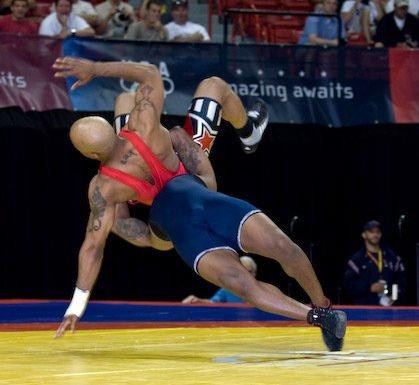 The scientific definition of power in athletics looks like this: Force x Velocity = Power.
The scientific definition of power in athletics looks like this: Force x Velocity = Power.
Athletic power is defined by the ability to exert a maximal force in a minimal amount of time.
Resistance training typically increases our ability to apply a maximum amount of force, but for power to be maximized the time component must also be altered.
This is where velocity comes in and a thing called 'rate of force production.'
How quickly can use generate force to move?
Some types of power training will improve our ability to produce force, while others help improve the rate at which strength can be generated.
--------------------------------------------------------------------------------
Assessing Power Output
Lets jump right into it and give you a few tests, so you can determine how powerful you are.
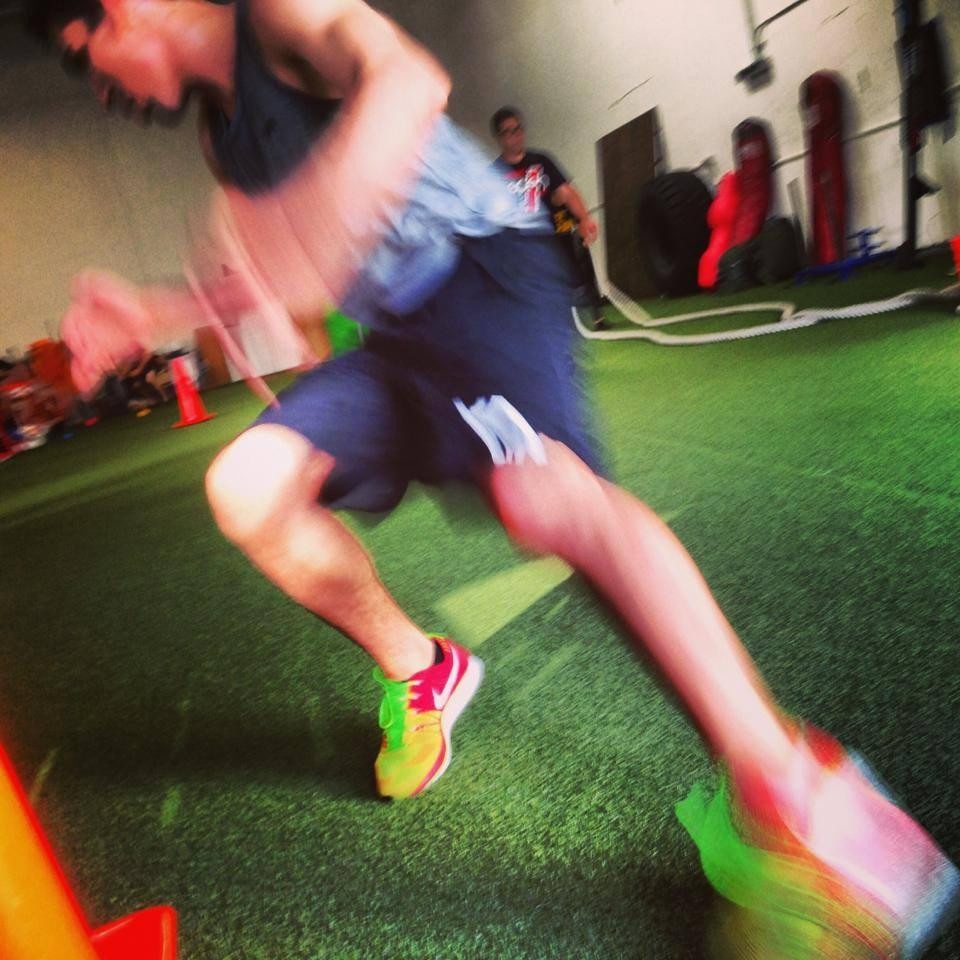 20 Yard Shuttle (5-10-5)
20 Yard Shuttle (5-10-5)
This drill is a very popular test for football players and is a great way test speed, explosion, body awareness and the ability to change direction (agility). Three marker cones are placed along a line five yards apart. The athlete straddles the middle line and can start by going either to the right or left direction. For example, on the signal 'Go' the athlete turns and runs five yards to the right side and touches the line with his right hand. He then runs 10 yards to his left and touches the other line with his left hand, then finally turns and finishes by running back through the start/finish line.
Broad Jump
Broad Jump is a common and easy to administer test of explosive leg power. The measurement is taken from take-off line to the nearest point of contact on the landing (back of the heels). Record the longest distance jumped, the best of three attempts.
Medicine Ball Throw for Distance
This is another simple way to test upper body pressing power. Start in a seated position, good posture, with a medicine ball (10% of BW) in both hands. Without moving the torso, chest pass (throw) the ball as far as possible. Measure the distance covered, best of three attempts.
Power Clean
The power clean and other Olympic weight lifting variations have been a staple of strength and power development for years. The objective of these exercises is to develop the large muscles of the body in an explosive action that requires the use of many joints and muscle groups in a coordinated movement. Before performing this test, please ensure that proper technique has been learned and the athlete has plenty of time under the bar, before performing a max effort test.
CAUTION: Unsupervised testing or poorly performed exercises are not recommended under any circumstances because of the potential for injury and reduced validity of test measures
--------------------------------------------------------------------------------
Ways to Improve Power Output
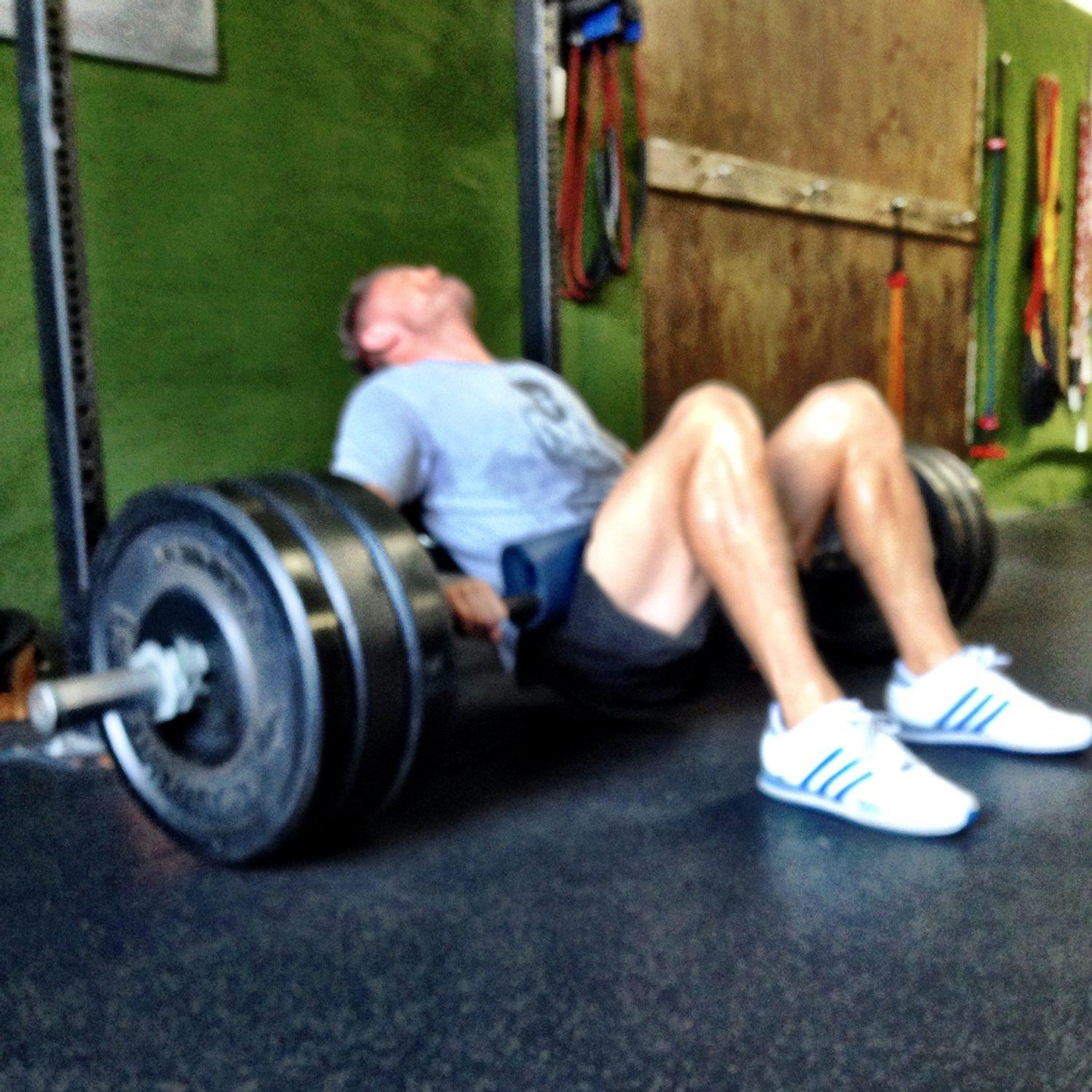 Max Effort Lifts - 1-5 reps, 2-5 min rest, 2-5 sets.
Max Effort Lifts - 1-5 reps, 2-5 min rest, 2-5 sets.
The max effort method is one of the fastest ways to improve general strength. Use BIG movements, like the squat, deadlift, bench press and the goal is to lift as heavy as possible, within that athlete's capability.
Complexes - Heavy Lift combined with an Explosive Drill.
Complex training combines a slow, heavy strength exercise like a Squat with a light, fast, explosive exercise like a jump, a sprint or a throw. The idea is to use the heavy, slow movement to maximally recruit the nervous system, then take advantage of that recruitment with the fast exercise. For example, perform a set of strength exercises, such as three or four heavy reps of the Back Squat, followed by a set of five vertical jumps. Allow complete recovery before starting the next set.
 Power Intervals - 7-10sec of effort, followed by 2-5min of rest, 5-6 rounds.
Power Intervals - 7-10sec of effort, followed by 2-5min of rest, 5-6 rounds.
Power intervals should recruit as many muscles as possible, so choosing the right drill is critical. Sprinting, repeated jumps, battling ropes, Versaclimber, Airdyne sprints or similar will work well. 100%, max effort is essential! Measure your output in number of reps, distance covered, watts, etc and then shoot to repeat and beat that effort on each interval. The ability to repeat 100% efforts takes practice. Lots of practice: lots of intervals, lots of sweat, lots of hard work.
Understanding the Variables
Intensity of power training is HIGH, so duration, or time under tension, should be LOW. Typically power drills last 5-10sec.
Allow Complete Recovery between sets. In order to repeat an explosive effort with the same intensity and develop more power, we need to give our body time to recover between sets. Typically, this is about 2-5 minutes.
--------------------------------------------------------------------------------
Exercises to Improve Athletic Power
Max Effort Lifts like deadlifts, squats, bench press and other compound resistance drills are a great way for an athlete to improve their ability to produce force.
Check out this squat tutorial from Chad Wesley Smith, owner of Juggernaut Training Systems:
Dynamic Exercises like squat jumps, kettlebell swings or sandbag max lunges force the athlete to produce force, absorb force as it comes back and then repeat that process as quickly as possible while maintaining good form. These types of drills help develop timing, body awareness and other aspects that translate well into athletics.
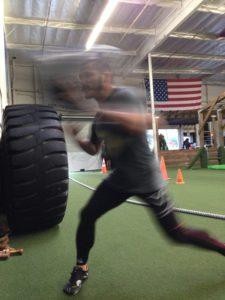 Medicine Ball Throws are incredibly beneficial for developing power.
Medicine Ball Throws are incredibly beneficial for developing power.
There are a variety of different medicine ball exercises that we can perform.
- Overhead
- Chest Passes
- Rotational Throws
- Single arm throws
- and more.
These can be done seated, kneeling, half kneeling, standing or incorporated with movement. Exercises can be done in open space, against a wall or with a partner depending upon the goal.
Jumping is another simple way to develop body awareness, control and lower body power.
Lots of people want to start athletes with advanced plyometric drills, but its important to develop the athletes ability to jump and land efficiently, before getting too complex.
Once we have developed good mechanics, we can increase the intensity by adding speed, multiple jumps, changes of direction, etc.
Here's a sample jump progression:
Sprinting has obvious athletic benefits and is used by athletes and coaches around the globe.
New research in The Journal of Strength and Conditioning Research, examined short sprints intervals on athletic performance and hormonal levels. Researchers studied the effects of 4 weeks of sprint interval training on aerobic and anaerobic performance in preseason Iranian wrestlers.
Fifteen wrestlers were assessed for the study. All athletes followed a preseason training program that included drills, technique training, wrestling, and weight training. In addition to the preseason training program, the experimental group also performed a running based sprint interval protocol. Athletes ran 6 sprints at 100% effort, with a 10 second rest between each sprint. The athletes performed the sprint protocol for 2 sessions per week, for the duration of the study. Researchers tested the athletes before and after the intervention, examining VO2 max, blood tests, peak oxygen pulse, exhaustion tests, and tests to determine peak and mean power output.
Results indicated that the experimental group did display significant improvements in VO2 max, peak oxygen pulse, and improved in both aerobic and anaerobic performance. These athletes also displayed significant increases in their peak power output scores and mean power output scores after the sprinting protocol. Blood tests indicated that after the sprint training, testosterone levels significantly increased, while the measures of cortisol significantly decreased.
Bottom line: Sprinting is awesome for developing full body power.
--------------------------------------------------------------------------------
Putting it all Together
As we are developing our athletes, it is important to use common sense.
Many of the exercises and strategies we mentioned are advanced and require healthy, strong, coordinated athletes. Be sure to use exercises and drills that you have practiced and are comfortable performing at high intensities (weight or speed). Just like when we are learning new combinations, strikes, takedown, submissions, etc, its important to learn the basics, develop good technique and then slowly add intensity.
If you are looking to improve your athletic ability, be sure to take the appropriate steps of developing mobility, stability, strength and then power.
Taking the time to build a good foundation will prolong your career, help avoid injuries and help develop into a MORE Powerful Athlete down the road.
Keep us posted on your progress!
#FightCampConditioning
Sample Workouts
The goal of these "ADVANCED" Workouts is to develop absolute strength, power and explosiveness. These should be used carefully and only when the athlete is prepared for this level of intensity. They should be very familiar with the movements and have sufficient levels of strength, before moving into this category.
Max Effort
*1-5 reps, 3-5 sets, 3-5+ minutes of rest between sets.
- Sandbag Bearhug Squat
- Weighted Chin Up
- Barbell Hip Extension
- Farmer Carry
Contrast Training
*Contrast training uses a combination of heavy loads and explosive movements to stimulate the nervous system and muscles to fire more powerfully and efficiently. 3-5 reps heavy, 3-5 reps explosive, then rest 3-5 minutes.
1a. Squat
1b. Box Jump
2a. Barbell Floor Press
2b. Lying Med Ball Chest Pass
3a. Split Squat
3b. Skip for Height
4a. Weighted Chin Up
4b. Med Ball Slams
Explosive Repeats
*Explode, rest, repeat. Done correctly, these workouts can help you learn how to repeat explosive efforts and recover more efficiently.
Sprints - 400m, 200m, 100m, 50m, shuttle runs. There are a lot of ways to mix up your sprint workouts. We tend to use a variety of distances and intensities throughout the camp. Just like training, some days are easy and long, others are short and intense.
Option 1: 4 X 400m
Option 2: 8 X 200m
Option 3: 10 X 100m
Option 4: 12 X 50m
———————————————————————————————
More Sample Workouts:
We typically work in 3 week blocks, with one primary goal for that 3 week block. The focus of these workouts is to develop max strength and power, so we can increase force production and help athletes become faster and more explosive. These can be used in coordination with less intense sessions to keep the athlete healthy.
Block 1: Develop the Athlete Workouts
Block 2: Develop the Athlete Workouts
Block 3: Develop the Athlete Workouts
Block 4: Develop the Athlete Workouts
Block 5: Develop the Athlete Workouts
Block 6: Develop the Athlete Workouts
Block 7: Develop the Athlete Workouts
Block 8: Develop the Athlete Workouts
Block 9: Develop the Athlete Workouts
Block 10: Develop the Athlete Workouts
* Customize these workouts to fit you or your athlete's specific ability level and goals.
#fightcampconditioning

